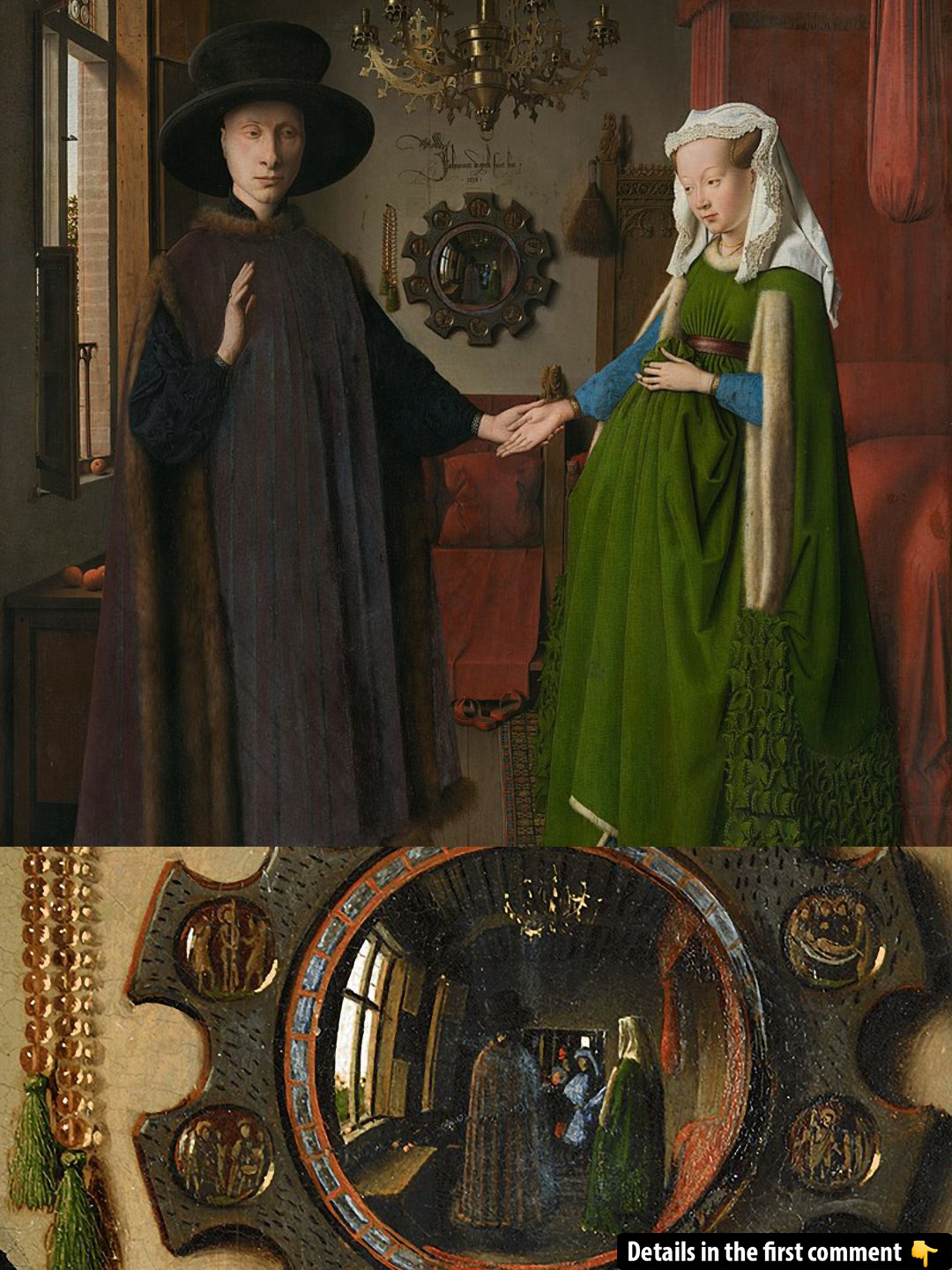The world of art often holds more than meets the eye. Hidden within every brushstroke, color, and shadow is a web of symbolism, offering deeper insights into the artist’s intent and the culture of the time. One such masterpiece that embodies this is Jan van Eyck’s “The Arnolfini Portrait.” At first glance, it may seem like a simple portrait of a married couple, but the layers of meaning woven into this painting invite us to look closer and ask: What secrets lie beneath the surface? Let’s unravel the rich symbolism of this iconic artwork.
The Arnolfini Portrait: A Brief Overview
Painted in 1434, “The Arnolfini Portrait” has long been a subject of fascination and debate. It is believed to depict Giovanni di Nicolao di Arnolfini, an Italian merchant, and his wife, Costanza Trenta, in their home in Bruges, Belgium. At first glance, the painting seems like a simple double portrait, but as we look closer, it becomes clear that van Eyck has imbued the work with layers of meaning that go far beyond a mere depiction of a couple.
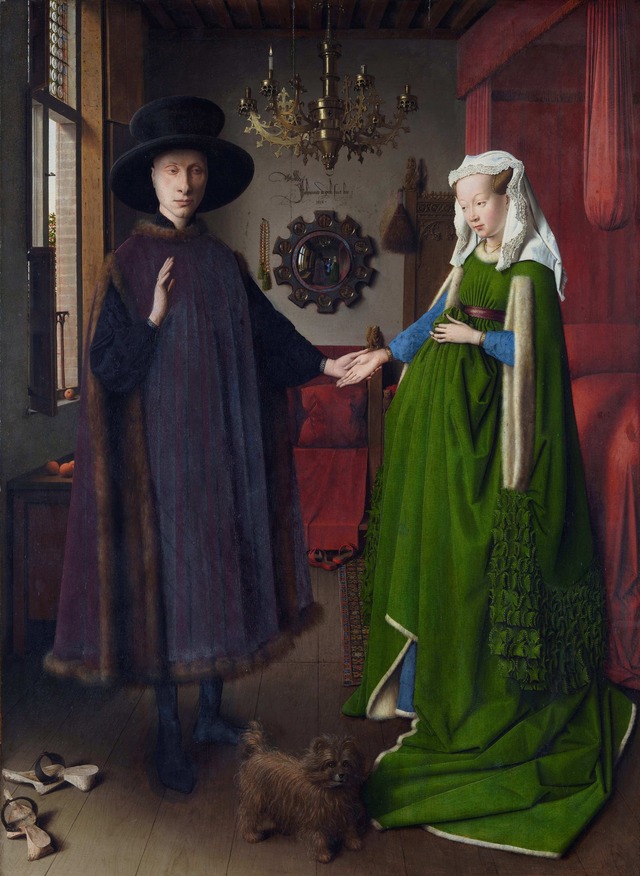
For many years, the painting was thought to be a wedding portrait, often referred to as “The Arnolfini Marriage.” This interpretation seems to fit with the symbolism of the time, which was often concerned with the sanctity of marriage and the relationship between the husband and wife. However, modern scholarship has raised questions about this interpretation, suggesting that the painting might not be a wedding portrait at all, but rather a commemorative one—a tribute to Costanza, who had passed away before the portrait was painted.
Video
Check out the video on the mysterious masterpiece that no one can solve – it’s an intriguing puzzle for history lovers!
Exploring the Hidden Symbols in The Arnolfini Portrait
One of the most intriguing aspects of “The Arnolfini Portrait” is the wealth of hidden symbols that van Eyck has woven into the painting. These symbols serve as visual metaphors, conveying deeper meanings about love, marriage, fidelity, and even the passage of life and death.
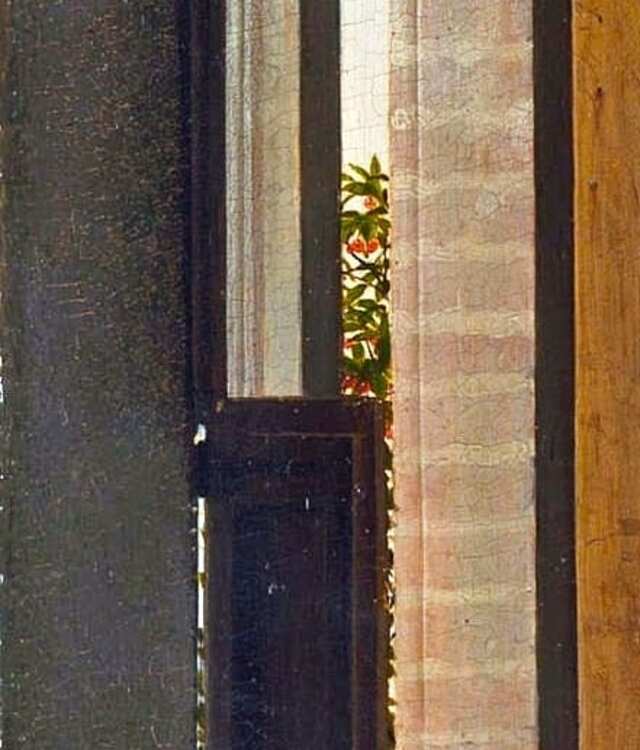
The Signature and the Mirror Reflection
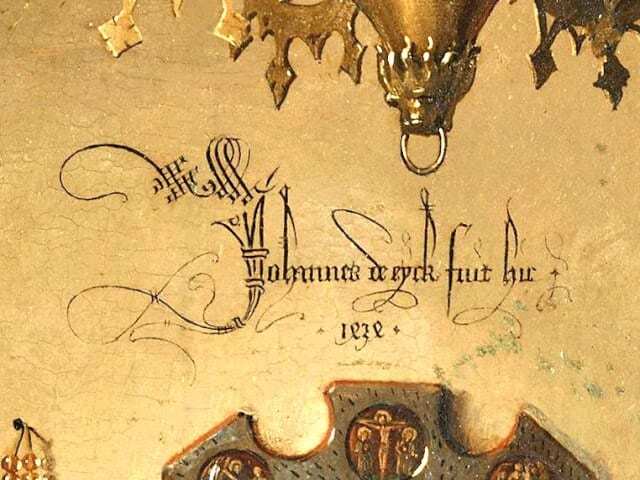
A key detail that draws attention in the painting is the inscription above the convex mirror, which reads, “Jan van Eyck was here 1434.” This signature is a rare and unusual addition to the work, as most artists of the time did not sign their paintings. However, van Eyck’s signature does more than just mark the artist’s presence—it also serves as a clue to the deeper narrative within the painting.
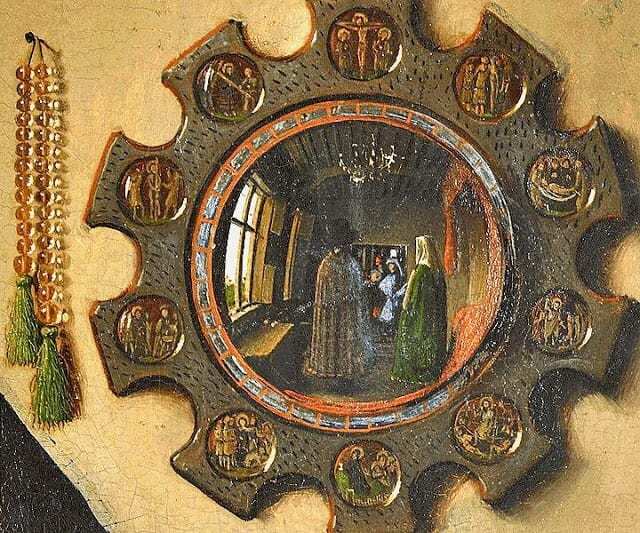
Looking into the mirror, we see two additional figures reflected: one is believed to be a self-portrait of the artist, with his arm raised in greeting, while the other is thought to be the viewer, suggesting that the painting is not only a portrait of the couple but also a moment frozen in time for the viewer to engage with. The mirror also frames a series of roundels depicting scenes from Christ’s Passion, further underscoring the religious context of the painting.
The Religious Symbolism in the Roundels
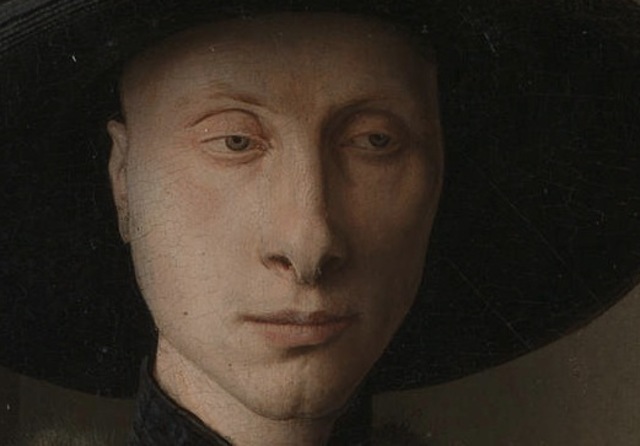
The roundels at the edge of the mirror are significant in their own right. On the man’s side, the scenes of Christ’s life are depicted, while the woman’s side shows Christ’s death and resurrection. This contrast is likely meant to symbolize the couple’s connection to the divine, as well as the cycle of life and death that underpins the human experience.
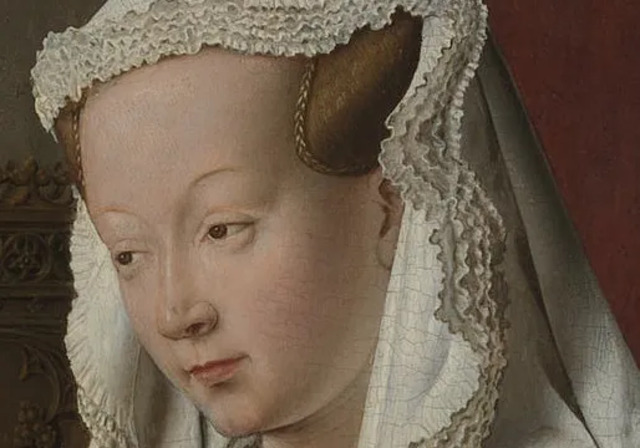
Additionally, the presence of St. Margaret, the patron saint of childbirth, in the painting further enhances the religious symbolism. St. Margaret is depicted trampling a mythical beast, which is an attribute associated with her. This could be interpreted as a sign of protection for the woman, especially in the context of childbirth, a theme that resonates with the symbolic reading of the painting.
In this detail of the Arnolfini Portrait, we see a broom and a small carved figure atop a piece of furniture. The broom symbolizes domestic life and cleanliness, while the figure represents St. Margaret, the patron saint of childbirth.
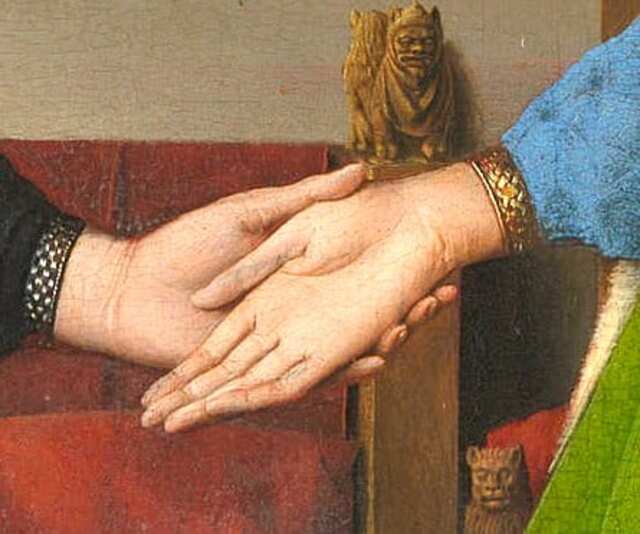
The Chandelier: A Candle and the Eye of God
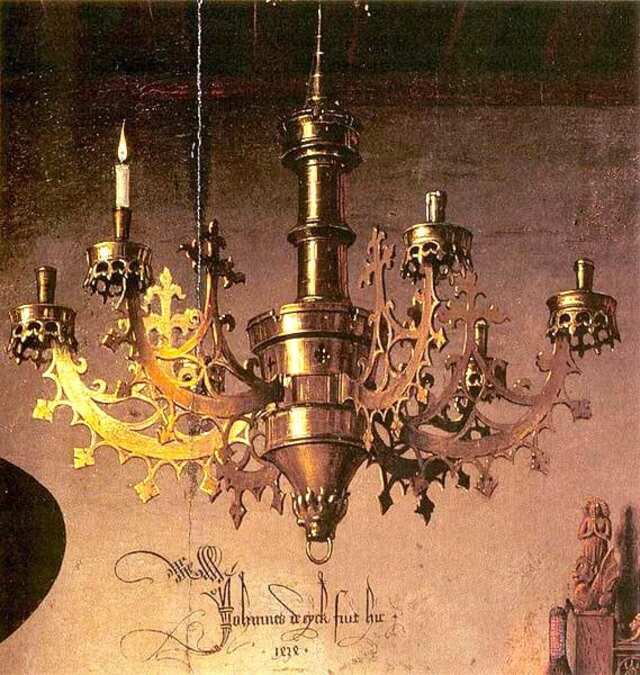
Another significant symbol in the painting is the chandelier, which features a single lit candle. This candle has been interpreted as the all-seeing eye of God, symbolizing divine presence and watchfulness. The fact that the candle is positioned above the couple suggests that their union is blessed by God.
Interestingly, the candle on the woman’s side is extinguished, while the one on the man’s side remains lit. This has been interpreted by some scholars as a metaphor for life and death: the man is alive, while the woman has passed away, perhaps during childbirth, as suggested by other elements in the painting.
Wealth and Virtue: The Oranges and the Dog
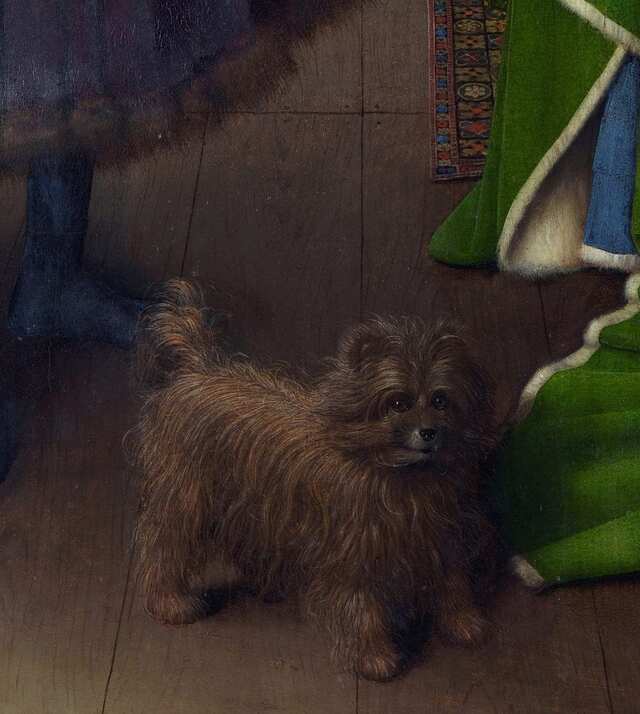
Van Eyck’s portrayal of wealth and virtue is evident in the various details throughout the painting. The oranges on the windowsill, for example, are a symbol of innocence and virtue, evoking the Garden of Eden before the Fall of Man. The fact that oranges were a rare and expensive commodity in Bruges at the time also serves as a symbol of the couple’s wealth.
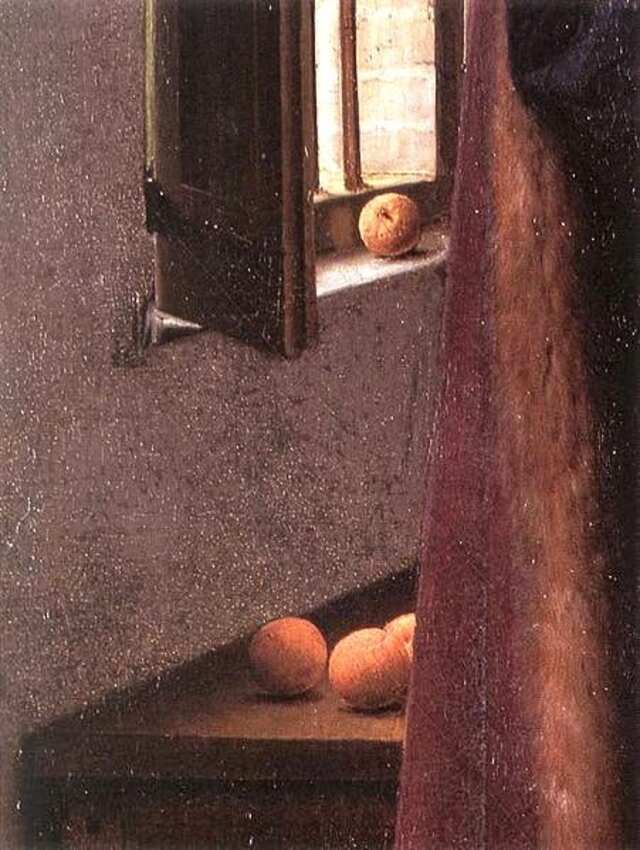
The dog, positioned between the couple, is another important symbol in the painting. Dogs were often associated with loyalty and fidelity, and in this context, the dog may represent the couple’s commitment to one another. Additionally, the dog’s gaze directed towards the viewer creates an intriguing connection between the viewer and the couple, emphasizing the shared experience of the painting.
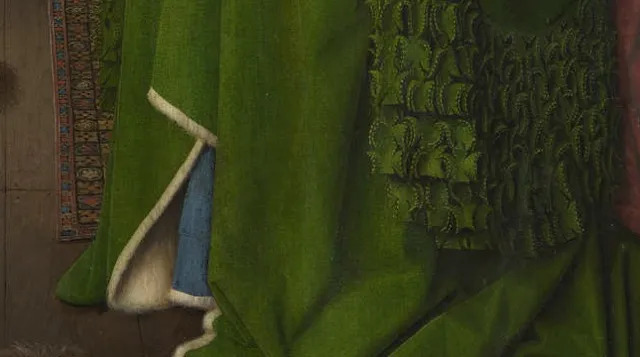
Love, Marriage, and Fidelity in The Arnolfini Portrait
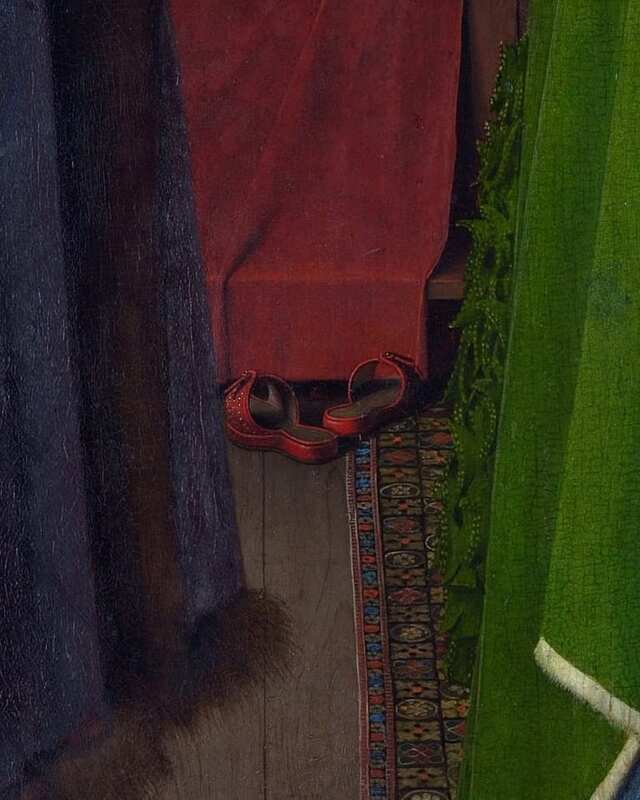
The couple’s act of removing their shoes in the painting is another significant symbol. In many cultures, the removal of shoes is a sign of respect and reverence, and in this case, it can be interpreted as a gesture that sanctifies the bedchamber and transforms it into a holy space. This act, combined with the other symbols of fidelity and virtue, suggests that the painting is not merely a portrait of a couple, but a visual representation of their love, commitment, and the sanctity of marriage.

The Symbolic Use of Light and Perspective in Van Eyck’s Work
Van Eyck’s mastery of light and perspective is evident in the painting’s remarkable detail. The artist’s use of oil paints, which allowed for slow drying and the application of thin layers of color, gives the painting a luminous quality that was revolutionary at the time. This technique allowed Van Eyck to create an astonishing sense of depth and realism, capturing the interplay of light on surfaces like the fabric of the woman’s gown and the gleaming metal of the chandelier.
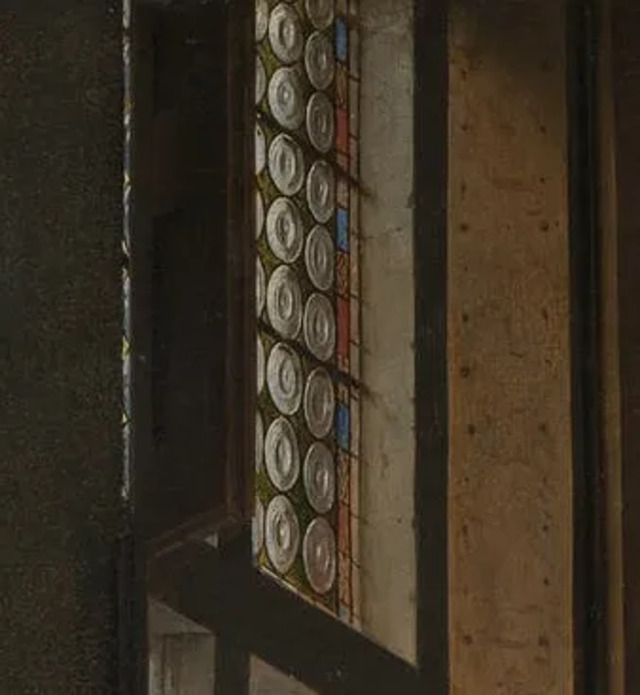
The use of perspective in the painting is also noteworthy. Van Eyck’s application of linear perspective, which was still in its infancy at the time, gives the composition a sense of space and dimensionality that was groundbreaking for the period.
The Mystery of the Arnolfini Portrait
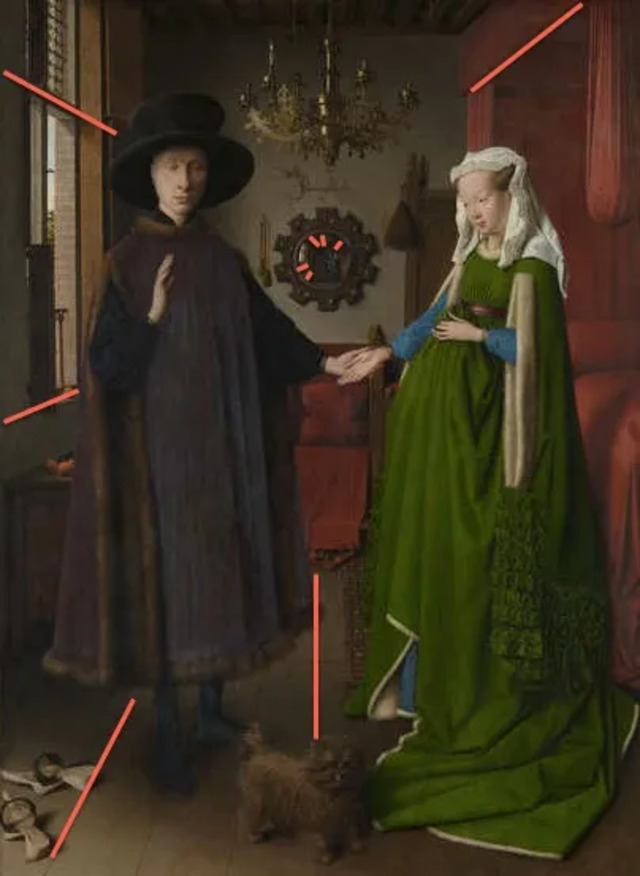
Despite centuries of scholarly study, “The Arnolfini Portrait” remains shrouded in mystery. The identity of the couple and the true meaning of the painting continue to be subjects of debate. Is it a wedding portrait, a commemorative piece, or something else entirely? The unanswered questions only add to the allure of the painting, ensuring that it remains one of the most fascinating works of art in the history of Western painting.
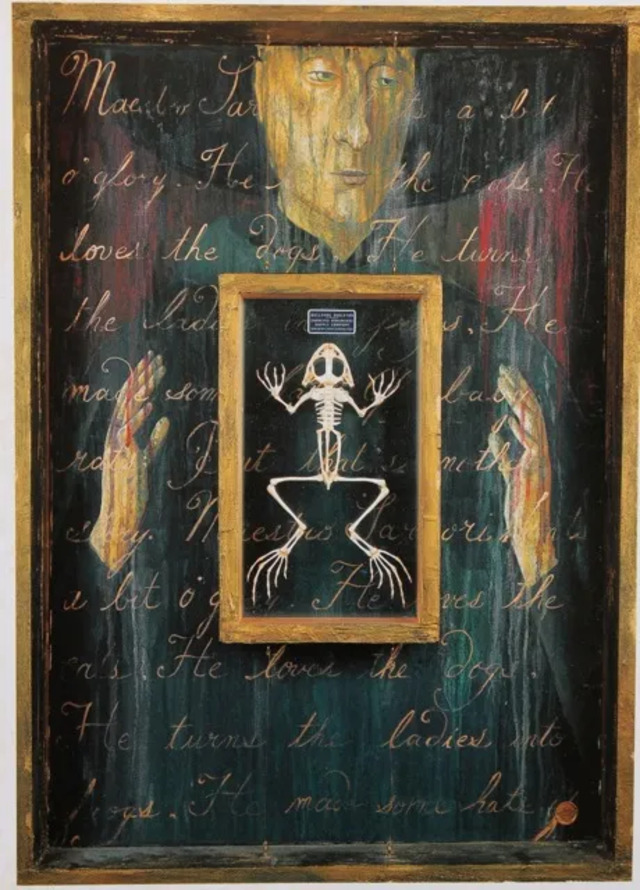
Conclusion: Jan van Eyck’s Genius and the Lasting Impact
Jan van Eyck’s “The Arnolfini Portrait” stands as a testament to the artist’s genius and his ability to capture the complexity of human life through symbolism and meticulous detail. The painting’s hidden messages and symbols continue to captivate viewers and scholars alike, offering new layers of meaning with every viewing. Whether interpreted as a wedding portrait, a memorial, or a visual meditation on life and death, “The Arnolfini Portrait” remains a masterpiece that invites viewers to look deeper and uncover the secrets hidden within its elegant composition.
Video
Watch the video on “The Arnolfini Portrait” by Jan Van Eyck – it’s a fascinating explanation of this great work of art!
